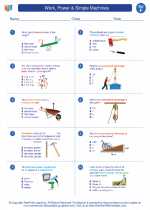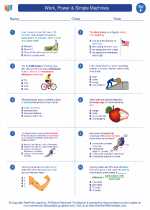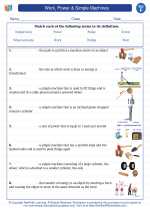Mutualism
Mutualism is a type of symbiotic relationship between two organisms in which both species benefit. This interaction is mutually beneficial, as each organism provides something the other needs, such as food, shelter, or protection. Mutualistic relationships can occur between animals, plants, fungi, and bacteria.
Examples of Mutualism
- Bees and Flowers: Bees collect nectar from flowers for food, and in the process, they transfer pollen from one flower to another, aiding in the plants' reproduction.
- Clownfish and Sea Anemones: Clownfish seek shelter among the tentacles of sea anemones, which provides protection for the fish, and in return, the fish's waste provides nutrients for the anemone.
- Legumes and Nitrogen-Fixing Bacteria: Legume plants form nodules on their roots where nitrogen-fixing bacteria reside. The bacteria convert atmospheric nitrogen into a form that the plants can use, and the plants provide the bacteria with nutrients.
Study Guide
When studying mutualism, it's important to understand the following key points:
- The definition of mutualism and how it differs from other types of symbiotic relationships.
- Examples of mutualistic relationships in different ecosystems, including terrestrial and aquatic environments.
- The benefits that each organism receives in a mutualistic relationship and how these interactions contribute to the overall stability of ecosystems.
- The potential impacts of human activities, such as deforestation or pollution, on mutualistic relationships and the consequences for biodiversity.
- The role of mutualism in agricultural practices, such as the use of nitrogen-fixing bacteria in farming and the cultivation of beneficial plant-pollinator relationships.
Understanding mutualism is essential for comprehending the interconnectedness of species within ecosystems and the importance of cooperation for the survival and success of diverse organisms.
[Mutualism] Related Worksheets and Study Guides:
.◂Science Worksheets and Study Guides Sixth Grade. Work, Power & Simple Machines
Worksheet/Answer key Work, Power & Simple Machines
Work, Power & Simple Machines  Worksheet/Answer key
Worksheet/Answer key Work, Power & Simple Machines
Work, Power & Simple Machines  Worksheet/Answer key
Worksheet/Answer key Work, Power & Simple Machines
Work, Power & Simple Machines  Vocabulary/Answer key
Vocabulary/Answer key Work, Power & Simple Machines
Work, Power & Simple Machines  Vocabulary/Answer key
Vocabulary/Answer key Work, Power & Simple Machines
Work, Power & Simple Machines 

 Worksheet/Answer key
Worksheet/Answer key
 Worksheet/Answer key
Worksheet/Answer key
 Vocabulary/Answer key
Vocabulary/Answer key
 Vocabulary/Answer key
Vocabulary/Answer key

The resources above cover the following skills:
Reading Standards for Literacy in Science and Technical Subjects
Craft and Structure
Determine the meaning of symbols, key terms, and other domain-specific words and phrases as they are used in a specific scientific or technical context relevant to grades 6-8 texts and topics.